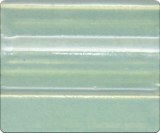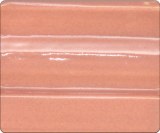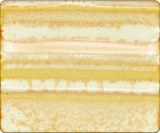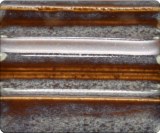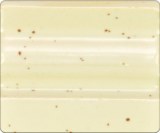Kiln Price
- Under $1,000.00 (12896)
- $1,000.00 - $1,500.00 (291)
- $1,500.00 - $2,000.00 (326)
- $2,000.00 - $2,500.00 (412)
- $2,500.00 - $3,000.00 (453)
- $3,000.00 - $4,000.00 (749)
- $4,000.00 - $5,000.00 (982)
- $5,000.00 - $10,000.00 (1617)
- Over $10,000.00 (1324)
Kiln Type
- Pottery (2432)
- Glass (654)
- Multi-Media (455)
- Gas and Raku (52)
- Knife Ovens (200)
- Metal Working (260)
- Test Kilns (259)
Kiln Shape
- Round (1946)
- Oval (432)
- Front Loading (421)
- Square Top Loading (290)
Kiln Voltage
Cone Rating
Inside Height (inches)
- Less than 8" (400)
- 8" - 10" (113)
- 10" - 12" (47)
- 12" - 14" (292)
- 14" - 16" (24)
- 16" - 18" (382)
- 18" - 20" (460)
- 20" - 22" (332)
- 22" - 24" (598)
- 24" - 26" (176)
- 26" - 28" (781)
- 28" - 30" (88)
- More than 30" (278)
Inside Width (inches)
- Less than 8" (57)
- 8" - 10" (178)
- 10" - 12" (241)
- 12" - 14" (44)
- 14" - 16" (176)
- 16" - 18" (432)
- 18" - 20" (89)
- 20" - 22" (168)
- 22" - 24" (792)
- 24" - 26" (144)
- 26" - 28" (676)
- 28" - 30" (812)
- More than 30" (428)
Inside Depth (inches)
- Less than 8" (18)
- 8" - 10" (53)
- 10" - 12" (97)
- 12" - 14" (52)
- 14" - 16" (160)
- 16" - 18" (423)
- 18" - 20" (157)
- 20" - 22" (192)
- 22" - 24" (885)
- 24" - 26" (280)
- 26" - 28" (755)
- 28" - 30" (876)
- More than 30" (272)
Temp. Rating - Gloves
- 200°F (19)
- 250°F (18)
- 300°F (17)
- 325°F (18)
- 350°F (15)
- 425°F (13)
- 460°F (12)
- 500°F (8)
- 700°F (4)
- 800°F (2)
- 1100°F (1)
Clay Type/Color
Clay Type
- Porcelain (33)
- Stoneware (95)
- Earthenware (16)
- Casting Slip (24)
- Dry Clay (7)
- Self Hardening/Modeling (9)
- Specialty (26)
Firing Range
Clay Color
- Brown (58)
- Terra-cotta (22)
- Tan/Grey (72)
- White (85)
- Black (12)
- Blue (5)
- Red (25)
- Orange (6)
- Yellow (2)
- Green (2)
- Purple (1)
Craft
- Throwing Bodies (133)
- Sculpture/Handbuilding (128)
- Slip Casting (24)
- 3D Printing (1)
- Raku (5)
Glaze Color
- Black (153)
- Blue (619)
- Brown (429)
- Clear (80)
- Green (691)
- Gray (151)
- Metallic (83)
- Multicolor (414)
- Orange (191)
- Pink (205)
- Purple (222)
- Red (327)
- Tan (119)
- White (215)
- Yellow (179)
- Sample Set (41)
Cone
- Low Fire (06-04) (960)
- Medium Fire (5-7) (1894)
- High Fire (9-10) (262)
- Underglaze (393)
Glaze Finish
Glaze Clarity
- Transparent (187)
- Translucent (1065)
- Opaque (1788)
- Semi-Opaque (152)
Size
- 5lb Dry (26)
- 6lb Dry (44)
- 10lb Dry (265)
- 25lb Dry (220)
- 2oz (292)
- 4oz (171)
- 8oz (90)
- 16oz (Pint) (1493)
- Gallon (444)
- 3 Gallons (167)
Kiln Shelf Size
Kiln Shelf Shape
- Round (33)
- Round Half (26)
- Polygonal (15)
- Polygonal Half (22)
- Square (36)
- Rectangle (40)
Kiln Shelf Type
- Cordierite/High Alumina (152)
- Silicone Carbide (11)
- Hollow (6)
- Fiber Paper (1)
Kiln Shelf Thickness
Kiln Shelf Brands
- The Ceramic Shop (48)
- Advancer (9)
- Cedar Heights (16)
- Cone Art (12)
- Evenheat (21)
- L&L (12)
- Olympic (1)
- Paragon (37)
- Skutt (13)
Brand
- 3D Potter (14)
- Advancer (10)
- Aegean (10)
- Aftosa (5)
- AirKing (60)
- Alexandria Pottery Co (25)
- Amaco (732)
- ANH Refractories (3)
- Archie Bray (2)
- Ateco (9)
- Atrix (14)
- Axner (18)
- Bailey (6)
- Bamboo Tools (56)
- Bartlett (7)
- Blue Diamond (10)
- Brent (104)
- BTH (2)
- Buffalo Dental (13)
- Ceramic Store Inc (3)
- Chick Tools (2)
- Chinese Clay Art (117)
- Chinese Tools (1)
- Chrysanthos (7)
- Clay Planet (20)
- Colorobbia (92)
- ConeArt (416)
- Core Lite (16)
- Coyote (834)
- Dal Tile (4)
- Duncan (9)
- Elan Transfers (73)
- Euclid (4)
- Evenheat (842)
- EZScreenPrint (97)
- Falcon (6)
- Fineline Applicators (12)
- Fired On Images (2)
- Garrity Tools (67)
- General Pencil Co (10)
- Georgies (42)
- Giffin Grip (41)
- GR Pottery Forms (87)
- HBI (15)
- Hsin-Chuen Lin (26)
- Hydro-Bat (1)
- IMCO Clay (17)
- Jen-Ken (8)
- Jiffy Mixer (8)
- JK Adams (5)
- Kemper (153)
- Kentucky Mudworks (123)
- KilnShield (10)
- L&L (1970)
- Laguna (158)
- Lehman MFG (44)
- Maryland China (14)
- Mason Stain (305)
- Mayco (1053)
- Milestone Decals (222)
- Minnesota Clay (43)
- MKM Tools (286)
- Monkey Stuff (12)
- Mudtools (133)
- Neighborhood Potters (1)
- New England Hardboard (22)
- North Star (96)
- Olympic (1431)
- Orton (86)
- Pacifica (22)
- Paragon (1349)
- Peter Pugger (83)
- Pottery Mill (11)
- Pottery Supply House (2)
- Practicon (5)
- Princeton Artist Brush Co. (31)
- Quark (10)
- Resco (1)
- Ritual (36)
- Royal and Langnickel (75)
- Sanbao (269)
- Scott Creek (33)
- Sculpey (164)
- Seattle Pottery Supply (60)
- Shimpo Nidec (87)
- SiO-2 Clay (20)
- Skutt (1587)
- Small Ceramics (4)
- Smashed Studio (40)
- Sno Industries (12)
- Solder Clay Mixers (8)
- Soolla (22)
- Spectrum (531)
- Speedball (253)
- Standard Clay (115)
- Steel Pottery (86)
- Stone Leaf Pottery (8)
- Talisman Enterprises (12)
- The Ceramic Shop (2659)
- Tortuga Tools (40)
- Trim Gin (7)
- USG (7)
- US Pigment (11)
- Van Gilder (7)
- Vent-A-Kiln (15)
- Vibrantz (6)
- Wells Lamont (18)
- Wizard (26)
- Wiziwig (34)
- Xiem (263)
Rib Texture
Rib Hardness
- Soft/Flexible (26)
- Medium/Semi-flexible (124)
- Hard/Rigid (266)
Sets
- Sets (115)

Spectrum Glaze Company, located in Canada is a leader in glaze safety and quality. Their glazes are used and loved by artists all over the world.
About The Stoneware Series:
Spectrum offers 79 colors in the cone 4/6 Stoneware Series. All of these glazes are lead-free and dinnerware safe, and most of them also come with the A/P non-toxic rating from the Art & Creative Materials Institute (ACMI) that you can find marked on the product label. Some of the reactive type glazes are rated C/L by the ACMI which means that they are considered toxic in the liquid (unfired) state due to the presence of heavy metals, such as copper or vanadium, beyond the non-toxic legal limit. C/L rated glazes are not suitable for use by young children or pregnant women. There are three types of stoneware glazes including clear glazes, plain colored glazes, and reactive glazes. Clear glazes are used to create a high gloss surface or cover designs created with underglazes. You can choose from gloss, satin or crackle finishes. The plain colored glazes are opaque and come in gloss and satin finishes. Some of the most popular stoneware glazes are the reactive colors which produce multi-tone and multi-colored effects by the combination of various metal oxides. You can create many interesting effects by layering reactive glazes over or under one another.
1100 Clear Gloss Glaze - High glossy shine. Best results when applied thin.
1120 Clear Satin Glaze - Not as translucent as the clear gloss glazes and will tend to mute the appearance of underglaze decoration somewhat. It should be kept thin (i.e. 1 or 2 coats by brushing) to improve clarity. Satin glazes can appear milky when applied too thick.
1187 Clear Crackle Glaze - After the piece has been removed from the kiln and allowed to cool the crackle pattern will form. A colored dye can be rubbed into the surface to emphasize the crackle pattern. Crackle glazes are not considered dinnerware safe due to the possibility of bacteria growth in the cracks.
Plain Colored Glazes:
Opaque Gloss Glazes - Smooth satin finish.
Metallic Glazes - Have a beautiful metallic finish. Please note that metallic glazes are lead free, but not all of them are dinnerware safe or non-toxic because of the presence of a large amount of other metallic oxides.
Reactive Glazes:
Reactive Glazes are formulated to produce reactions during the firing cycle which give very interesting and beautiful effects. The final appearance of the glaze is dependent on firing temperature, glaze thickness and the composition of the clay body being used. The same glaze can look quite different on different clay bodies. The samples tiles are made with 3 brush coats of glaze fired to cone 5 in an electric kiln on a white clay body. Different results should be expected in reduction firings. Be more careful when using reactive glazes on vertical surfaces as thicker applications can tend to make the glaze run. Use fewer coats towards the bottom of the piece.
About Low Fire Glaze 700 Series:
700 Clear Gloss Glazes - Has a good tolerance for a wide variety of low fire pug clay bodies and rarely crazes. It was designed specifically for pugged clays, and therefore should be tested before being used on castware due to the potential difference in coefficient of expansion. If you are looking for a clear glaze designed specifically for castware, consider trying our 800 Clear. Clear glaze should be applied thinly (i.e. 1 to 2 coats by brushing) as it may cloud when applied too heavily.
Opaque Gloss Glazes - Available in excellent bright primary colors. These glazes require 2 to 3 coats by brushing for opaque coverage. In general, a more even appearance can be achieved by alternating the direction of brush strokes from the previous coat (i.e. first brush up and down the piece, next coat brush side to side). These glazes do not bleed together very much so they can usually be butted against each other without the colors running, leaving a nice sharp edge.
800-828 Semi-Transparent Gloss Glazes - Can be used to produce a multi-tone appearance since the color gets darker where they are thicker, such as in places where they flow into details and crevices on pieces. It's best to apply them thinly (i.e. 2 coats by brushing). 800 Clear is suitable for slip cast ware that is generally higher in talc content and therefore higher in expansion than pug clay ware (i.e. hand-built, wheel-thrown or RAM pressed ware).
901-906 Low Stone Glazes - Glazes with the depth and color that give the appearance of bein a stoneware glaze. They are available in glossy, semi transparent, satin, speckled, and metallic finishes. Apply three thick coats of metallic glazes for brightest results. These glazes looked excellent when overlapped with one another.
850-879 Raku Glazes - Developed for firing in either electric or gas kilns. Eleven of the Raku glazes are lead-free and non-toxic (850,851,854,856,871,872,873,874,875,877,878). All of the rest are lead-free, but are over the threshold limit for copper and are therefore not non-toxic in the liquid state. Raku glazes can be fired anywhere from 1600 F up to cone 06 (1850 F) in either an electric or gas kiln. Spectrum Glazes recommends firing to 850 -856 to a peak of 1700 - 1750 F. They should be allowed to cool in the kiln to 1600 F. While still red hot, quickly transfer pieces into a reduction bin ( a lidded metal garbage can or small metal container lined with newspaper or sawdust). As soon as the pieces are in the bin the lid should be put on to keep oxygen from entering the container, in order to develop the reduction atmosphere. The pieces should be allowed to cool in the bin for at least 20 minutes.
WARNING: When red hot pieces go into the bin, the organic material ignites and will produce flames and smoke. This part of the firing, particularly the opening of the reduction bin, should be done outside. Always take safety precautions when firing raku such as the use of high temperature gloves, protective eyewear, and a respirator. Always have a fire extinguisher handy.
Recommended Tips for Firing:
- Try to size the reduction bin to the size of the piece
- Establish a good seal to the reduction bin so that air is not entering and smoke is not leaving the bin.
- Position the organic material ( newspaper, sawdust, etc.) and the piece so that the flames can get all around the piece.
- Different organic materials may produce very different results, for example a glaze reduced in newspaper could be a beautiful blue color and the same glaze reduced in sawdust could have a metallic copper appearance.
- Pieces should be cleaned immediately with water and a hard bristle brush. After cleaning, warm the pieces in the kiln to evaporate any water from the piece. This helps to set the colors more permanently.
Glazes may vary in color depending on the process, clay, and firing technique.
Satin Glazes
250 Clear Satin Glaze - This cone 06/04 clear glaze has a smooth satin finish and is ideal for covering underglaze designs. It should also be applied thinly as it may cloud if applied too heavily. It is lead-free, dinnerware safe, A/P non-toxic and also zinc free.
251-269 Opaque Satin Glazes - These cone 06/04 glazes provide solid coverage and a beautiful satin finish. They require 2 to 3 coats by brushing. Satin glazes tend to be stiffer and do not move much in firing, so an even application is important. They are sensitive to the firing temperature, in that the hotter they are fired the smoother and glossier the surface will become. They are all lead-free, dinnerware safe and A/P non-toxic.
Crackle Glazes
138, 140, 170 - Although they are lead-free and non-toxic, they are not dinnerware safe because of the possibility of bacteria growth in the cracks. After they have been fired to cone 06/04 and allowed to cool you can rub ink or dye into the cracks, in order to make the crackle pattern stand out the way it does in sample tiles.







